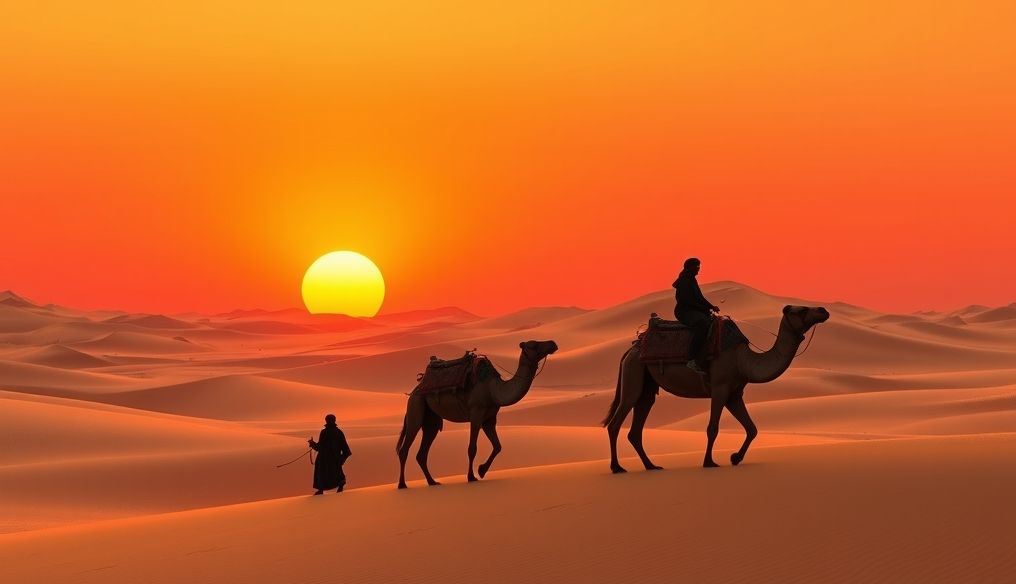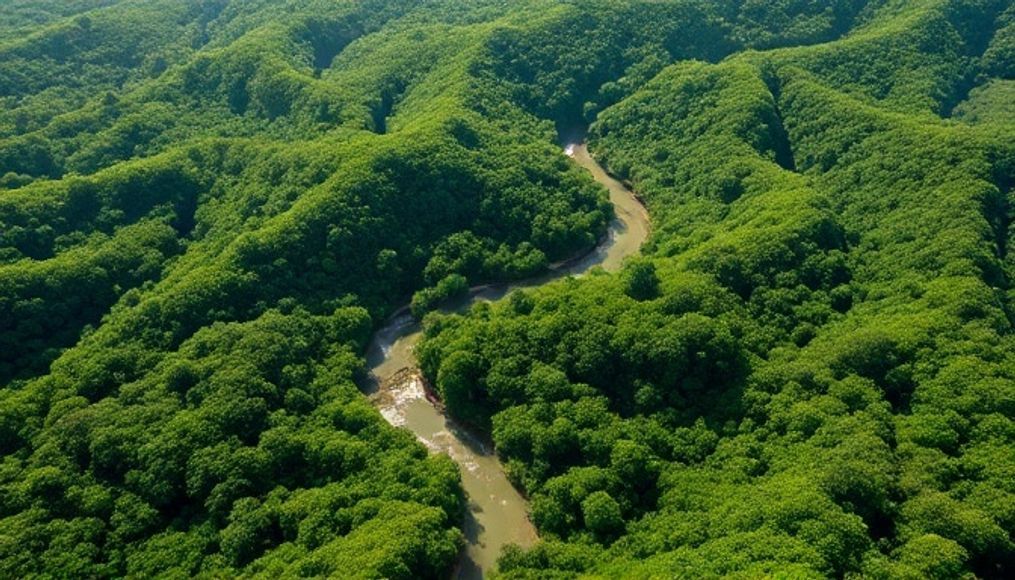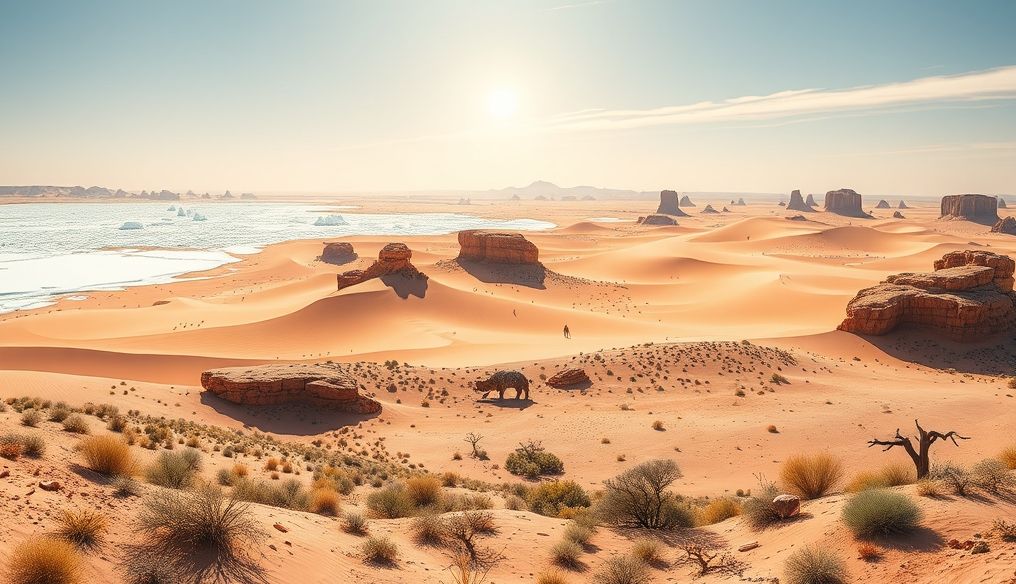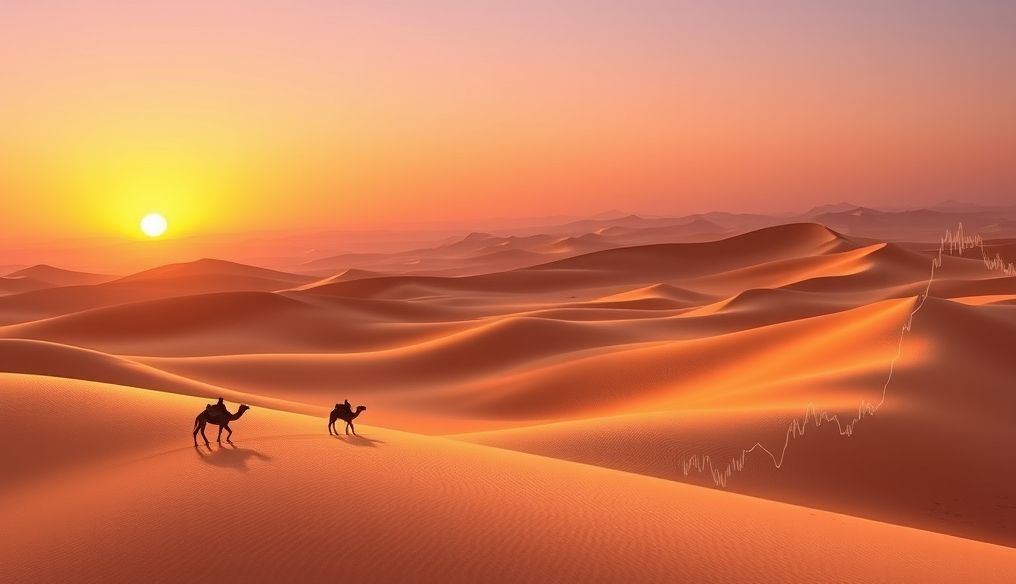What are the Largest Deserts in the World and What Distinguishes Them?
A desert, often envisioned as a vast, arid expanse of sand, is much more than just a harsh landscape. They are complex and diverse ecosystems, each with unique characteristics that set them apart. From the icy expanses of Antarctica to the sweeping sand dunes of the Sahara, these extreme landscapes host a remarkable array of life and play a crucial role in our planet's climate.
Understanding the Desert: More Than Just Sand
Generally, a desert is defined as a region that receives less than 250 mm (10 inches) of rainfall annually. However, this definition alone doesn't tell the whole story. Deserts can be hot or cold, and they may be covered in sand, rock, or ice. What unites them is the scarcity of water.
Types of Deserts:
- Hot Deserts: Like the Sahara, known for their scorching temperatures and scarce rainfall.
- Cold Deserts: Like the Gobi Desert, experience freezing temperatures during winter and snowfall.
- Coastal Deserts: Like the Atacama Desert, influenced by cold ocean currents, reducing rainfall and creating dense fog.
- Polar Deserts: Like Antarctica, are frozen regions that receive very little precipitation.
The Largest Deserts in the World: A Closer Look
Let's explore the largest deserts in the world, highlighting their unique characteristics:
1. Antarctica: The Frozen Desert
It may come as a surprise, but Antarctica is the largest desert in the world. This frozen continent covers an area of approximately 14 million square kilometers (5.4 million square miles). Despite being covered in ice, it is considered a desert due to its low precipitation. Antarctica receives less than 200 mm (8 inches) of precipitation annually, mostly in the form of snow.
Characteristics of Antarctica:
- Climate: Extremely cold, with an average annual temperature of around -57°C (-70°F).
- Wildlife: Home to seabirds, seals, whales, and some species of algae and other plants able to survive the harsh conditions.
- Scientific Significance: Plays a crucial role in regulating Earth's climate and monitoring global environmental changes.
2. Sahara Desert: The Sea of Sand
Located in North Africa, the Sahara Desert is the second-largest desert in the world, covering an area of approximately 9.2 million square kilometers (3.6 million square miles). It is known for its scorching temperatures, vast sand dunes, and arid landscapes.
Characteristics of the Sahara Desert:
- Climate: Hot and dry, with temperatures that can exceed 50°C (122°F) during the day.
- Wildlife: Home to various adapted animals, including camels, foxes, hyenas, and lizards.
- Cultural Significance: The Sahara has been an important trade route for centuries, connecting North Africa with the rest of the continent.
3. Arabian Desert: Sand and Rock
Located in Western Asia, the Arabian Desert covers an area of over 2.3 million square kilometers (900,000 square miles). It features a mix of sandy and rocky landscapes, as well as some rugged mountains.
Characteristics of the Arabian Desert:
- Climate: Hot and dry, with extreme temperature fluctuations between day and night.
- Wildlife: Home to various adapted animals, including camels, gazelles, hyenas, and rodents.
- Economic Significance: Rich in oil and natural gas, making it a strategically important region.
4. Gobi Desert: The Cold Desert
Located in northern China and southern Mongolia, the Gobi Desert covers an area of approximately 1.3 million square kilometers (500,000 square miles). Unlike hot deserts, the Gobi is a cold desert that experiences freezing temperatures during winter.
Characteristics of the Gobi Desert:
- Climate: Continental, with hot summers and severely cold winters.
- Wildlife: Home to various adapted animals, including Bactrian camels, gazelles, and snow leopards.
- Historical Significance: The Gobi Desert was part of the ancient Silk Road, connecting the East and the West.
5. Kalahari Desert: The Red Sand
Located in southern Africa, the Kalahari Desert covers an area of approximately 900,000 square kilometers (350,000 square miles). It is known for its vast red sands and unique rock formations.
Characteristics of the Kalahari Desert:
- Climate: Semi-arid, with hot summers and mild winters.
- Wildlife: Home to various adapted animals, including lions, cheetahs, giraffes, and ostriches.
- Cultural Significance: Home to the Bushmen (San) people, who have lived in the region for thousands of years.
6. Patagonian Desert: Cold Shadows
Located in Argentina and Chile, the Patagonian Desert is the largest desert in South America. It features a cold and dry climate, with diverse landscapes including gravel plains, plateaus, and deep canyons.
Characteristics of the Patagonian Desert:
- Climate: Cold and dry, with strong winds.
- Wildlife: Home to various adapted animals, including guanacos, pumas, and armadillos.
- Geological Significance: Known for its unique rock formations, including the Andes Mountains.
7. Great Victoria Desert: Australia's Heart
The Great Victoria Desert covers a significant portion of Western Australia. It is characterized by its diverse terrain, from red sand dunes to gravel and rocky plains.
Characteristics of the Great Victoria Desert:
- Climate: Hot and dry in summer, mild in winter.
- Wildlife: Home to unique species of animals and plants adapted to the harsh conditions, such as the red kangaroo and the emu.
- Cultural Significance: Holds spiritual and cultural significance for indigenous populations.
8. Great Basin Desert: Desert Biodiversity
Located in the United States, the Great Basin Desert is a vast region of arid and semi-arid land. It's known for its biodiversity, with many endemic species of plants and animals.
Characteristics of the Great Basin Desert:
- Climate: Cold and dry, with significant temperature fluctuations.
- Wildlife: Home to various adapted animals, including pronghorn, coyotes, and jackrabbits.
- Environmental Significance: Plays a crucial role in preserving biodiversity in North America.
9. Chihuahuan Desert: A Unique Blend of Climates
Spanning across parts of Mexico and the United States, the Chihuahuan Desert features a unique blend of climates and landscapes. It's known for its plant diversity, including a wide array of cacti and succulents.
Characteristics of the Chihuahuan Desert:
- Climate: Semi-arid, with hot summers and mild winters.
- Wildlife: Home to various adapted animals, including lizards, snakes, and birds.
- Environmental Significance: Known for its plant diversity, including a wide array of cacti and succulents.
10. Karakum Desert: Hidden Treasures
Located in Central Asia, the Karakum Desert covers most of Turkmenistan. Though arid, it holds natural treasures like the Darvaza gas crater, known as the "Door to Hell".
Characteristics of the Karakum Desert:
- Climate: Continental, with hot summers and cold winters.
- Wildlife: Home to various adapted animals, including gazelles, turtles, and birds.
- Economic Significance: Rich in natural gas.
The Importance of Deserts:
Despite their harsh conditions, deserts play a crucial role in Earth's ecosystem:
- Biodiversity: Support numerous adapted species of plants and animals.
- Climate Regulation: Influence global weather patterns by reflecting sunlight and storing carbon.
- Natural Resources: Contain valuable minerals, oil, and gas reserves.
- Cultural Significance: Have been home to numerous civilizations throughout history.
Challenges and Threats:
Deserts face numerous challenges and threats, including:
- Desertification: The spread of desert land due to human activities and climate change.
- Climate Change: Leading to increased temperatures and altered rainfall patterns, exacerbating desert conditions.
- Overexploitation of Resources: Leading to groundwater depletion and land degradation.
Conserving Deserts:
It is essential to take steps to protect and conserve deserts for future generations. These steps include:
- Sustainable Resource Management: Using groundwater and agricultural land in a sustainable manner.
- Combating Desertification: Planting trees and restoring degraded land.
- Mitigating Climate Change: Reducing greenhouse gas emissions.
- Protecting Protected Areas: Establishing nature reserves to protect biodiversity.
In Conclusion:
Deserts are not just barren landscapes of sand. They are complex and diverse ecosystems that play a crucial role in our planet. By understanding their characteristics and importance, we can work to protect and conserve them for future generations.




